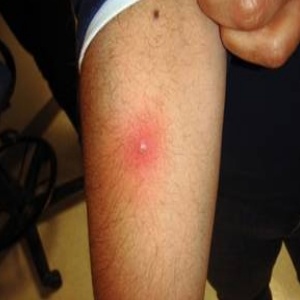
What is MRSA? Methicillin-Resistant Staphylococci refer to a particular group of Gram-positive, naturally resistant bacteria which are commonly found among humans and animals. MRSA is the main cause of many difficult-to-remediate infections in humans today. In fact, MRSA can be fatal.
There are two basic types of MRSA, the primary type being Staph and the secondary type which is a more difficult to treat form of the infection. The main difference between the two types of MRSA is that the primary MRSA, as its name suggests, is resistant to standard antibiotics, while the secondary type is not.
MRSA has been around for many years now, but it is only recently that scientists have fully understood how this disease progresses and the causes of the infection. In order to fully understand what is MRSA, one has to look at the history of the disease itself. Until the 1980's, it was thought that MRSA was a relatively rare condition that affected only hospital patients. However, MRSA was discovered in an outpatient clinic of a New York City hospital. Since that time, it has spread throughout the country and it has been found in nearly every hospital and health center in the US.
MRSA begins when a person's immune system is weak or compromised. When a healthy person has a minor injury or cuts on their skin, their body's natural defenses go into overdrive to fight off infection. This results in the overgrowth of bacteria, which can result in serious infections and sometimes even death.
One way to prevent this overgrowth of bacteria and MRSA is with proper sanitation and hygienic conditions. This means that all hospital personnel, including all doctors, nurses and other medical staff should practice good hand washing after each patient. The use of gloves and mouth protection should also be encouraged.
If the patient is showing any signs of infection, a doctor should be contacted immediately, especially if the patient is already displaying some of the symptoms of MRSA. In fact, the earlier the MRSA is found the better, since it can be treated more effectively before it takes root and spreads out of control.

One of the first signs of MRSA, tingling or pain, usually occurs in one place or on the skin
However, it can get anywhere on the body, including the face, nose, mouth, and groin area.
Treatment for MRSA depends a lot on the type of bacteria and their resistance to the active antibiotics. While antibiotics do work against some types of MRSA, they may not always completely stop the spread of the disease once it has begun.
It is important that patients get tested for MRSA as soon as possible, because the sooner it is diagnosed, the sooner treatment can begin. When doctors determine that there is no cause for concern, they recommend hospitalizing patients for observation or hospitalizing them for treatment with potent antibacterial drugs.
Patients who do not have any symptoms should be advised to stay at home and avoid direct physical contact with others. The doctor may then do a physical exam to rule out other causes of the condition, such as an open wound or skin irritation.
Another important thing to remember about MRSA is that while antibiotics have helped slow its spread, it remains an extremely contagious and potentially fatal disease. Hence, there is no need to assume that your hospital has MRSA if you are a healthy patient. It is important for patients to tell their doctor if they have an unexplained fever, chills, pain, or discharge from the eyes, nose, or mouth.
If MRSA is suspected, the most effective treatment option is to see a doctor, who will test the patient for the infection and then begin a course of antibiotics. Antibiotic treatment is usually provided by taking antibiotics intravenously, either in liquid or pill form.

